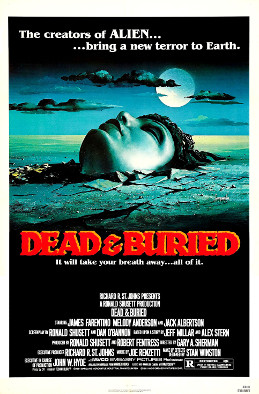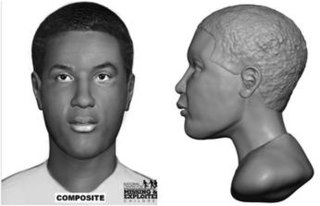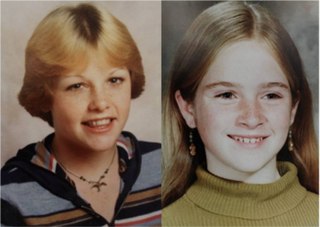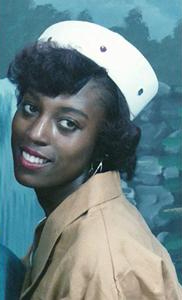Synopsis
In 2001, the Los Angeles County Coroner's Office investigates deaths, including those of people lacking next of kin. Field workers enter residences to perform initial investigation and to remove the bodies, while office workers examine the decedents' personal papers, attempting to contact relatives or friends. The body of Ronald Eugene Tanner is discovered in his apartment. Preceded in death by his immediate family, Tanner lacked next of kin. A gay man, Tanner was also preceded in death by his partner James Fuller, who died of AIDS in 1993. At the time of Fuller's death, Tanner had arranged for Fuller's burial at Hollywood Hills Cemetery, using a plot he owned. Tanner's apartment is decorated with several artworks, including a large, framed California State Flag.
The Coroner's office works other cases. Donald Eugene Wright is found dead in a motel room following a welfare check, and machinist Tommy Ray Albertson is also found dead at his residence. Having used his plot to bury Fuller, Tanner left instructions for his body to be buried at a family plot in Mendocino, California. The cemetery manager determines that the family plot is full, and Tanner's body is buried in a nearby plot. The county's process for managing deaths also involves the decedents' financials. Albertson's tools and Tanner's artworks—including the large California flag—are collected from their apartments and sold at an estate sale; the Coroner's office uses the proceeds of decedents' personal effects to defray the costs of its own work and also to pay for funeral arrangements.
After a few months of investigation, the Coroner's office determines that no further progress can be made with the cases of Wright and Albertson, and both bodies are sent with a group of others to a morgue, and eventually to a crematorium. Workers break the bodies down to bone fragments, including their skulls, which are aglow in the flames of the cremator. The bone fragments are then ground to ash, and the cremains are stored in small metal boxes for a period of a few years, until finally they are buried in a mass grave, unmarked except for a small plaque showing the decedents' shared year of death. The film ends with the burial of people who died in 1997, the final step which will later be taken with the cremains of Wright and Albertson.

A funeral is a ceremony connected with the final disposition of a corpse, such as a burial or cremation, with the attendant observances. Funerary customs comprise the complex of beliefs and practices used by a culture to remember and respect the dead, from interment, to various monuments, prayers, and rituals undertaken in their honour. Customs vary between cultures and religious groups. Funerals have both normative and legal components. Common secular motivations for funerals include mourning the deceased, celebrating their life, and offering support and sympathy to the bereaved; additionally, funerals may have religious aspects that are intended to help the soul of the deceased reach the afterlife, resurrection or reincarnation.
Inquests in England and Wales are held into sudden or unexplained deaths and also into the circumstances of and discovery of a certain class of valuable artefacts known as "treasure trove". In England and Wales, inquests are the responsibility of a coroner, who operates under the jurisdiction of the Coroners and Justice Act 2009. In some circumstances where an inquest cannot view or hear all the evidence, it may be suspended and a public inquiry held with the consent of the Home Secretary.

A coroner is a government or judicial official who is empowered to conduct or order an inquest into the manner or cause of death. The official may also investigate or confirm the identity of an unknown person who has been found dead within the coroner's jurisdiction.

Cremation is a method of final disposition of a dead body through burning.

Fredrick Allen Hampton Sr. was an American Marxist-Leninist revolutionary. He came to prominence in his late teens and early 20s in Chicago as deputy chairman of the national Black Panther Party and chair of the Illinois chapter. As a progressive African American, he founded the anti-racist, anti-classist Rainbow Coalition, a prominent multicultural political organization that initially included the Black Panthers, Young Patriots, and the Young Lords, and an alliance among major Chicago street gangs to help them end infighting and work for social change. Hampton considered fascism the greatest threat, saying "nothing is more important than stopping fascism, because fascism will stop us all."

Dorothea Helen Puente was an American convicted serial killer. In the 1980s, she ran a boarding house in Sacramento, California, and murdered various elderly and mentally disabled boarders before cashing their Social Security checks. Puente's total count reached nine murders; she was convicted of three and the jury hung on the other six. Newspapers dubbed Puente the "Death House Landlady".

Dean Arnold Corll was an American serial killer and sex offender who abducted, raped, tortured, and murdered a minimum of twenty-eight teenage boys and young men between 1970 and 1973 in Houston and Pasadena, Texas. He was aided by two teenaged accomplices, David Owen Brooks and Elmer Wayne Henley. The crimes, which became known as the Houston Mass Murders, came to light after Henley fatally shot Corll. Upon discovery, the case was considered the worst example of serial murder in United States history.
Felo de se was a concept applied against the personal estates (assets) of adults who ended their own lives. Early English common law, among others, by this concept considered suicide a crime—a person found guilty of it, though dead, would ordinarily see penalties including forfeiture of property to the monarch and a shameful burial. Beginning in the seventeenth century precedent and coroners' custom gradually deemed suicide temporary insanity—court-pronounced conviction and penalty to heirs were gradually phased out.

Grand View Memorial Park and Crematory is a historic cemetery located in Glendale, California, in the United States. Established in 1884 as Glendale Cemetery, it changed its name to Grand View Memorial Park in 1919. The cemetery was the focus of a scandal that began in 2005, during which the operators were accused of leaving thousands of cremated remains unburied. New owners changed the name to Grand View Memorial Park and Crematory in 2015 and began a restoration of the property.

Adrienne Levine, usually known by the stage name Adrienne Shelly, was an American actress, film director, and screenwriter. She became known from acting in independent films such as Hal Hartley's The Unbelievable Truth (1989) and Trust (1990). She wrote, directed, and co-starred in the 2007 Waitress, a posthumous film that later became a Broadway show.

Dead & Buried is a 1981 American horror film directed by Gary Sherman, starring Melody Anderson, Jack Albertson, and James Farentino. It is Albertson's final live-action film role before his death six months after the film's release. The film focuses on a small town wherein a few tourists are murdered, but their corpses begin to reanimate. With a screenplay written by Dan O'Bannon and Ronald Shusett, the film was initially banned as a "video nasty" in the U.K. in the early 1980s, but was later acquitted of obscenity charges and removed from the Director of Public Prosecutions' list.
The Unified Victim Identification System (UVIS) is an Internet-enabled database system developed for the Office of Chief Medical Examiner of the City of New York (OCME) in the aftermath of the September 11 attacks on New York City and the crash of American Airlines Flight 587. It is intended to handle critical fatality management functions made necessary by a major disaster. UVIS is a strong flexible role-based application and permissions can be controlled dynamically.

Gareth Wyn Williams was a Welsh mathematician and Junior Analyst for GCHQ on secondment to the Secret Intelligence Service who was found dead in suspicious circumstances in Pimlico, London, on 23 August 2010, at a flat used to house Security Service's staff. The inquest found that his death was "unnatural and likely to have been criminally mediated." A subsequent Metropolitan Police re-investigation concluded that Williams's death was "probably an accident".

Elizabeth Ann Duncan (born Hazel Lucille Sinclaira Nigh was an American murderer. She was convicted of orchestrating the murder of her daughter-in-law in 1958. She was the last woman to be executed in California before the United States Supreme Court suspended the death penalty under Furman v. Georgia.

John Ingram Brandenburg Jr. and Keith Lavell Bibbs were two young murder victims formerly known as the Newton County John Does whose remains were discovered by mushroom foragers in Lake Village, Newton County, Indiana, on October 18 and 19, 1983. Both victims were discovered alongside two other murder victims whose bodies were identified within months of their discovery. All four were victims of serial killer Larry Eyler.

The murders of Kerry Graham and Francine Trimble are a currently unsolved double murder that occurred in December 1978, when both girls—aged 15 and 14 respectively—disappeared after leaving their homes in Forestville, California, to visit a shopping mall in Santa Rosa. Their remains were discovered in July 1979 approximately 80 mi (130 km) north of Forestville, concealed within duct-taped garbage bags and buried within an embankment of a heavily overgrown woodland area located beside a remote section of Highway 20, 12 mi (19 km) from the city of Willits.
A coroner in the U.S. state of Washington is a quasi-judicial, public official principally charged with the certification of human death. It is completely identical in authority to the parallel office of medical examiner, which also exists in the state. Washington uses a "mixed system" of death investigation with some counties employing coroners, and some employing medical examiners.

DNA Doe Project is an American nonprofit volunteer organization formed to identify unidentified deceased persons using forensic genealogy. Volunteers identify victims of automobile accidents, homicide, and unusual circumstances and persons who committed suicide under an alias. The group was founded in 2017 by Colleen M. Fitzpatrick and Margaret Press.
John Henry Barnstead was a Canadian tanner, barrister and the Registrar of Vital Statistics in Halifax, Nova Scotia, Canada. In 1912, at age 67, Barnstead coordinated the retrieval, cataloguing, and burial of RMS Titanic victims, devising a system of cataloguing mass disaster remains that is still in use.

Angela "Angie" Faye Toler was a formerly unidentified decedent who was found in Richmond, Virginia in November 1992, who was unidentified for 20 years. After moving from Princeton, North Carolina to Richmond with her boyfriend, Toler fell out of communication with her family. Toler's boyfriend soon moved back to Princeton alone, but Toler was not with him, and friends and family of Toler never heard from her again. In 2011, Nona Best, who was a cousin of Toler, was at a National Missing and Unidentified Persons System (NamUs) academy in Atlanta when a presentation by a Maryland coroner included a picture of an unidentified woman found in Richmond who had died of hypothermia. Best recognized the woman as Angela Toler, and she reached out to Toler's mother and sister as well as Virginia medical examiner Lara Frame to procure DNA samples for comparison. In late July 2012, the unidentified woman was positively identified as Angela Faye Toler. In 2019, a North Carolina state law was passed after being sponsored by State Representative Allen McNeill that would require all law enforcement agencies in the state to enter missing person cases into NamUs after 30 days. McNeill has mentioned being inspired by the story of Best identifying Toler.















